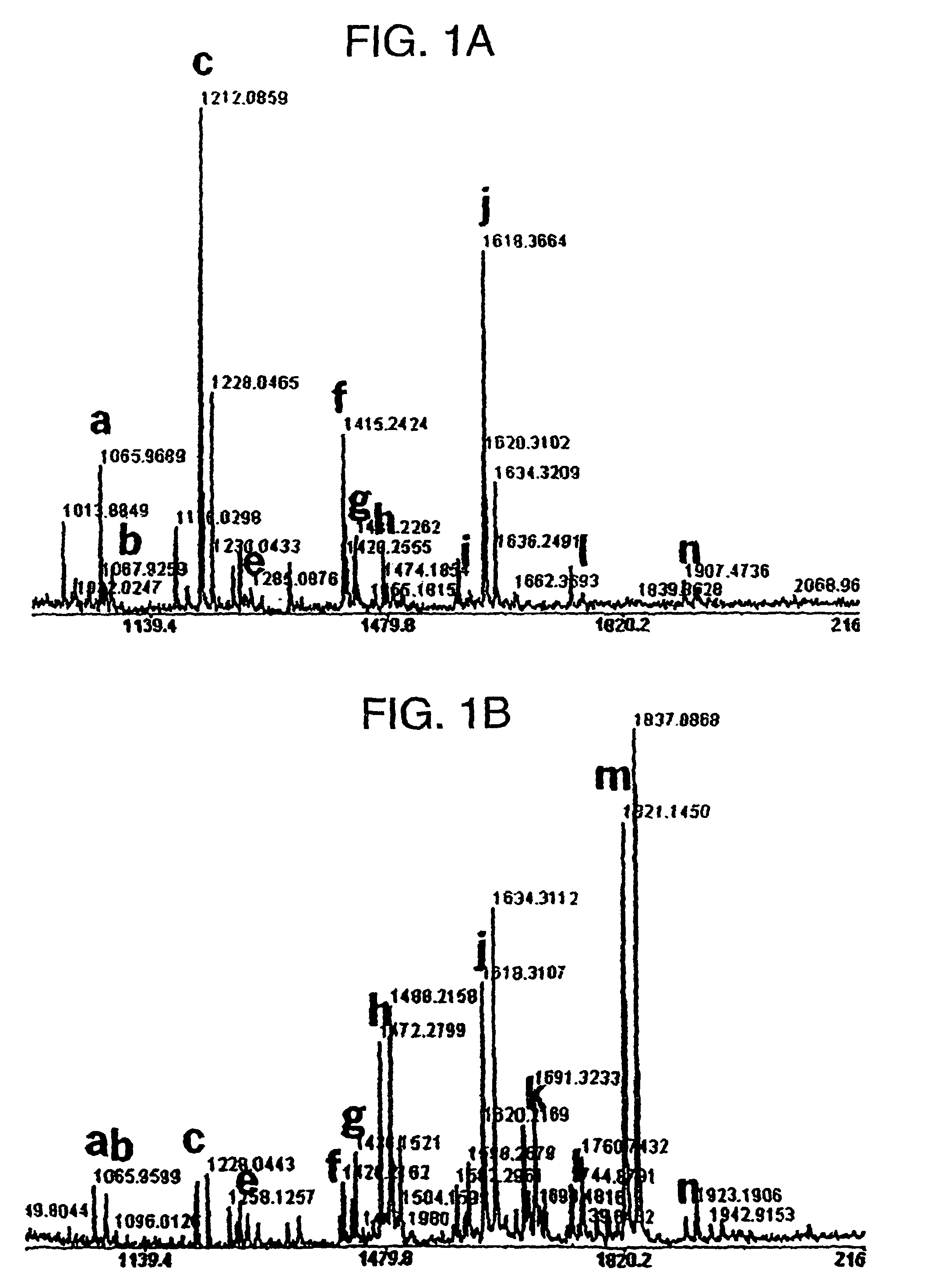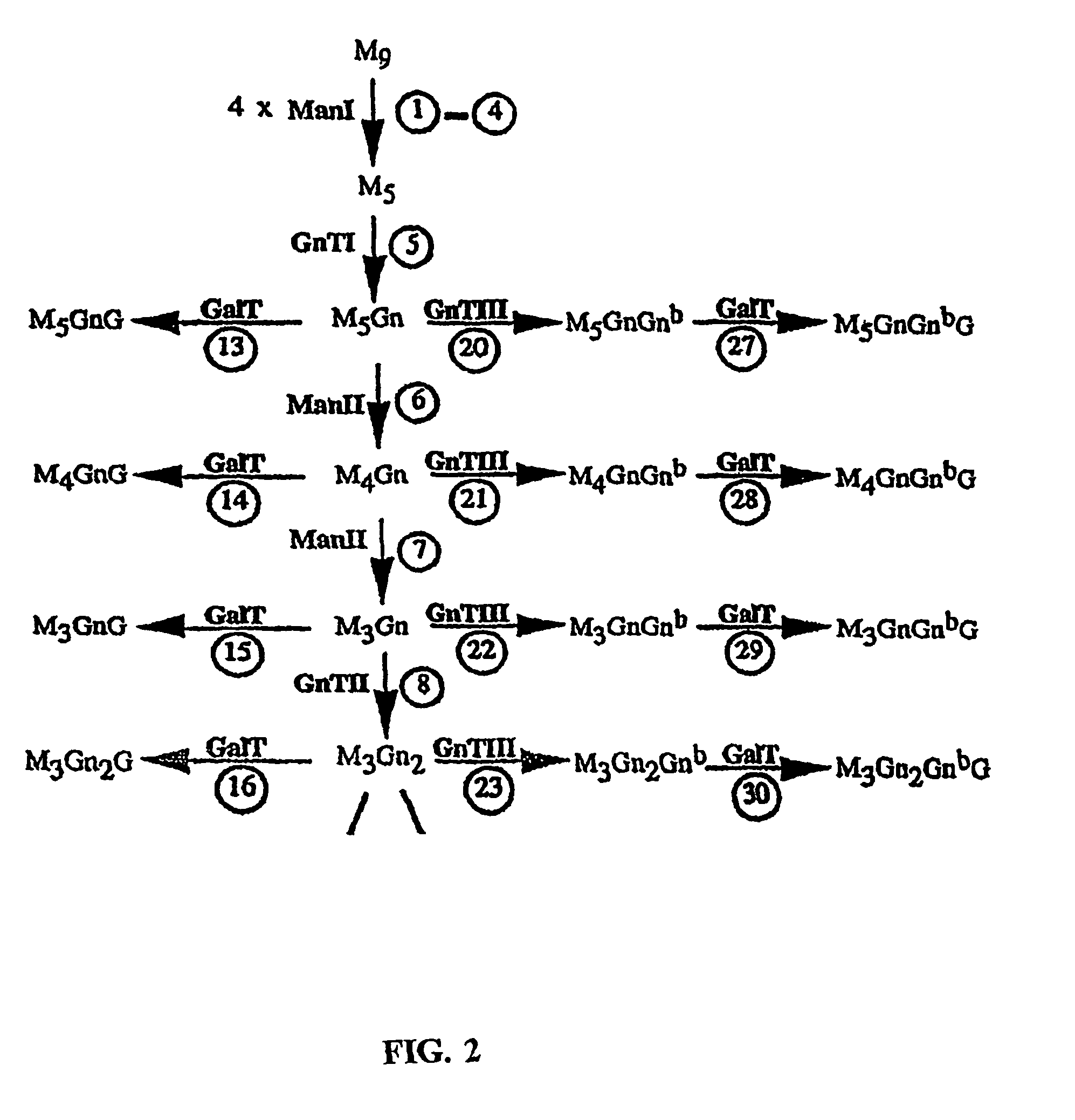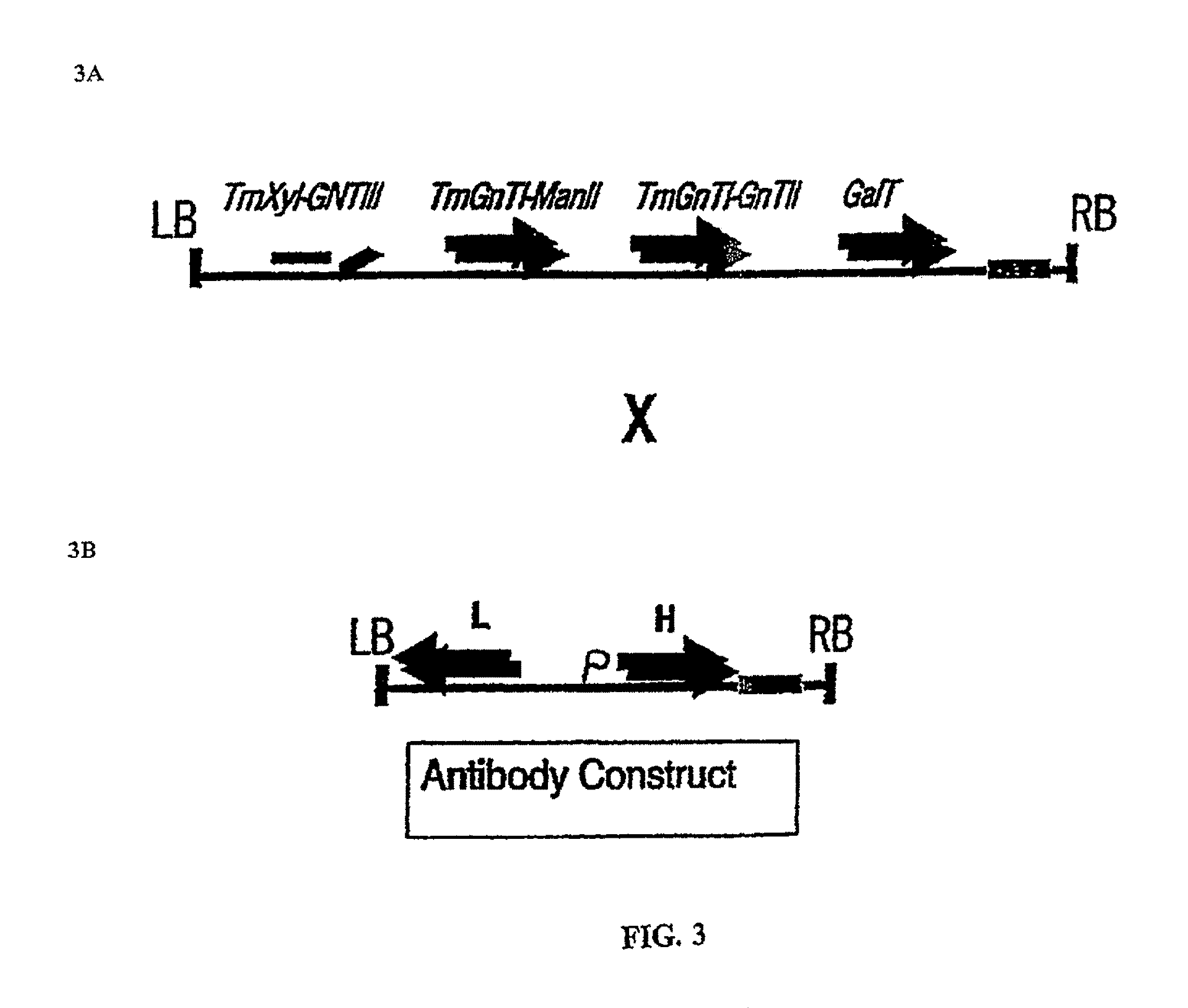GnTIII expression in plants
a technology of nacetylglucosaminyltransferase and plant, which is applied in the field of expression of a mammalian nacetylglucosaminyltransferase iii (gntiii) enzyme, can solve the problems of false positive reaction, toxic to cells, and plant production system is a very potent production system, so as to achieve the effect of increasing galactosylation
- Summary
- Abstract
- Description
- Claims
- Application Information
AI Technical Summary
Problems solved by technology
Method used
Image
Examples
example 1
[0183]Plasmids and plant transformation. PAC clone RP5-1104E15 GnTIII (SEQ ID NO: 33, FIG. 4A) was obtained from Pieter J. de Jong, Children's Hospital Oakland Research Institute (CHORI) and is available on request through Sanger Center being part of clone set HBRC-1. sc. The clone clone originates from Homo sapiens, male, blood and can be requested via the Sanger Center's website (from Human chromosome 22q12. 3-13.1; The Wellcome Trust Sanger Institute, Wellcome Trust Genome Campus, Hinxton, Cambridge, CB 10 1 SA, UK ; www.sanger.ac.uk).
[0184]The human gene for GnTIII was cloned from said PAC clone by PCR using AccuTaq LA DNA polymerase (SigmaAldrich) and primers GNT3F (5′-atactcgagttaacaatgaagatgagacgct-3′; SEQ ID NO: 3) and GNT3Rmyc (5′-tatggatcctaattcagatcctcttctgagatgag-3′; SEQ ID NO: 4). Oligos were from Eurogentec (Belgium). PCR was performed on a PerkinElmerCetus 480 thermal cycler (ABI / PE) using optimal conditions for the AccuTaq polymerase according to the manufacturer. Th...
example 2
[0186]Analysis of expression. Total protein extracts of tobacco leaves were prepared as described before (Bakker, et al., “Galactose-extended glycans of antibodies produced by transgenic plants”Proc. Nat. Acad. Sci. USA 98:2899-2904, 2001). The amount of protein present in samples was estimated by the Bradford method (Bradford, M. M., “A rapid and sensitive method for the quantitation of microgram quantities of protein utilizing the principle of protein-dye binding”Anal Biochem 72:248-254, 1976) using bovine serum albumin as standard. Fixed amounts of protein samples were run on precast 10 or 12% SDS-PAGE gels (Bio-Rad) under reduced conditions. Rainbow coloured molecular weight protein markers were from Amersham. Western blot analysis was performed essentially as described (Bakker, et al., “Galactose-extended glycans of antibodies produced by transgenic plants”Proc. Nat. Acad. Sci. USA 98:2899-2904, 2001). Separated proteins were transferred to nitrocellulose (BA85, Schleicher and ...
example 3
[0187]Matrix-assisted Laser Desorption Ionization Time-of-Flight (MALDI-TOF) Mass Spectrometry. For the analysis of glycan structure cellular proteins were isolated from tobacco leaves of a selected plant transformed with human GnTIII (GnTIII-17). Protein isolation and N-glycan preparation were performed as described (Elbers, et. al., 2001). The N-glycans were desalted on a nonporous, graphitized carbon-black column (Carbograph Ultra Clean Tubes, Alltech Associates) before mass spectrometry analysis as described. MALDI-TOF spectra were measured on a MICROMASS (Manchester, U. K.) Tof spec E MALDI-TOF mass spectrometer. Mass spectra were performed in positive mode by using 2,5-dihydroxybenzoic acid as the matrix essentially as described (Elbers, et al., 2001).
[0188]Expression of human GnTIII introduces bisecting N-glycans on endogenous glycoproteins in N. tabacum. Human GnTIII was introduced in tobacco plants by Agrobacterium-mediated transformation of binary vector pBINPLUSGnTIII con...
PUM
| Property | Measurement | Unit |
|---|---|---|
| temperature | aaaaa | aaaaa |
| temperature | aaaaa | aaaaa |
| temperature | aaaaa | aaaaa |
Abstract
Description
Claims
Application Information
 Login to view more
Login to view more - R&D Engineer
- R&D Manager
- IP Professional
- Industry Leading Data Capabilities
- Powerful AI technology
- Patent DNA Extraction
Browse by: Latest US Patents, China's latest patents, Technical Efficacy Thesaurus, Application Domain, Technology Topic.
© 2024 PatSnap. All rights reserved.Legal|Privacy policy|Modern Slavery Act Transparency Statement|Sitemap



